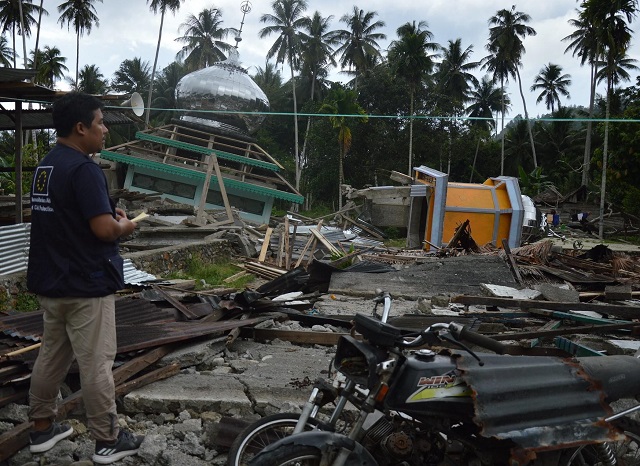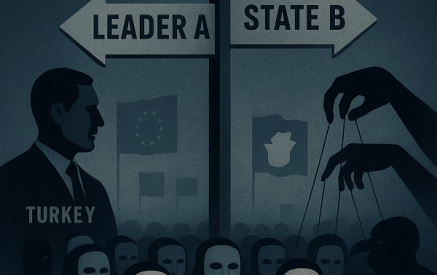The International Day for Disaster Risk Reduction celebrates how people and communities around the world are reducing their exposure to disasters and raising awareness about the importance of controlling the risks that they face. Good disaster risk governance can be measured in lives saved, reduced numbers of disaster-affected people and reduced economic losses. Both COVID-19 and the climate emergency are telling us that we need a clear vision and action based on scientific evidence for the public good.
Natural and man-made disasters are intensifying worldwide. The coronavirus pandemic is just the last of a series of emergencies that have put humanity under a severe stress. Like for other natural hazards and crises, the most vulnerable populations pay the highest price.
The Sendai Framework for Disaster Risk Reduction(link is external) agreed by UN Member States in 2015 calls for the implementation of national and local strategies for disaster risk reduction. This includes the need for strategies that not only address hazards like single floods and storms, but those that respond to systemic risk generated by zoonotic diseases, climate shocks and environmental breakdown.
The EU has been contributing to Sendai Priority 4(link is external) by ensuring that disaster preparedness is systematically embedded across all sectors into humanitarian aid programmes and projects. Moreover, with the outbreak of the coronavirus, EU strengthened its response by means of a Team Europe approach, combining resources from the EU, its Member States and financial institutions to support each partner country. The EU has mobilised more than €36 billion to fight the coronavirus on a global scale. The funds are used to address the urgent emergency response and consequent humanitarian needs, strengthen health, water, sanitation and nutrition systems, and mitigate the economic and social impacts of the coronavirus pandemic worldwide.
Read also
European Union Humanitarian Air Bridge
The European Union Humanitarian Air Bridge enables the delivery of humanitarian aid to countries affected by the coronavirus pandemic carrying medical equipment, and humanitarian cargo and staff, providing humanitarian assistance for the most vulnerable populations where the pandemic imposes constraints on transport and logistics.
Since the start of the operations on 8 May 2020, the EU has coordinated and financed the delivery of over 1,150 tons of medical equipment to critical areas in Africa, Asia and the Americas. Flights were carried out to Afghanistan, the African Union, Burkina Faso, Central African Republic, Chad, Côte d’Ivoire, Democratic Republic of Congo, Ethiopia, Guinea Bissau, Haiti, Iran, Iraq, Lebanon, Nigeria, Peru, São Tomé e Príncipe, Somalia, South Sudan, Sudan, Venezuela and Yemen.
Saving lives and reducing risks
When it comes to climate change, those hardes t hit are most often already in vulnerable conditions. People living in areas of conflict are particularly impacted by climate and environmental shocks as their resilience and capacity to cope has been degraded by armed conflict and violence.
While we know that these challenges will grow as the effects of climate change increase, the humanitarian impact of these interacting risks has received limited attention in international discussions on climate and security. On 25 September in the margins of the UN General Assembly, Commissioner for Crisis Management Janez Lenarčič co-hosted a virtual event on the humanitarian impact of combined conflict, climate and environmental risks, co-organised by the EU and the Kingdom of Belgium. The panel discussed how combined climate risks, environmental degradation and conflict, exacerbate people’s vulnerability, and how to better support them.
“It is clear that climate change and environmental degradation are threat multipliers. They are aggravating factors for conflict as they interact with the root causes. Today, it is estimated that at least 40% of internal conflicts have a link to natural resources. If we are to seek peace in these regions, we must also look to address the root cause of these issues. That is why the European Union is committed to addressing these crises collectively and individually,” said Commissioner Lenarčič.
The EU allocates on average €50 million of its annual humanitarian funding to targeted preparedness actions. It invests in early warning systems, in monitoring and building national and local capacities for response – as exemplified by the EU response to El Niño in the years 2015 and 2016 – supporting partners in developing cost-effective methods to mitigate risk and in collecting the evidence to justify preparedness for early action. Each disaster preparedness strategy includes a defined exit strategy, where local capacities are deemed adequate, or governments and development partners are able to take over.
The Copernicus Emergency Management Service(link is external) through its On Demand Mapping, provides detailed information on-demand for selected emergency situations that arise from natural or man-made disasters anywhere in the world. Copernicus EMS Early Warning and Monitoring systems, offer critical geospatial information at European and global level through continuous observations and forecasts for floods, droughts and forest fires.
The EU also engages and supports local and national government structures in all countries worldwide through the EU Civil Protection Mechanism, notably within the areas of prevention and preparedness. This mechanism has been crucial during the repatriation exercise to help EU travellers stranded abroad, due to the outbreak of the coronavirus pandemic, to return home.
Finally, the EU Aid Volunteers initiative brings volunteers and organisations together from different countries, providing practical support to humanitarian aid projects and contributing to strengthening local capacity and resilience of disaster-affected communities.
European Union























































